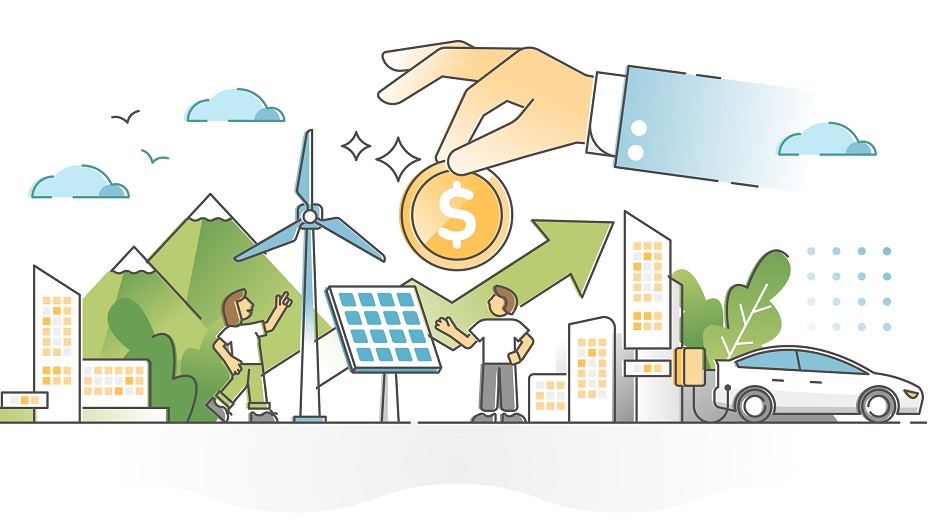Responsible investing, often associated with environmental, social, and governance (ESG) criteria, has become a cornerstone of modern financial strategies. Investors increasingly aim to align their portfolios with values that promote sustainability and social responsibility while seeking attractive returns.
Responsible investing is more than a trend—it’s a paradigm shift in how investors approach wealth creation and societal impact. By integrating ESG factors, understanding the potential for greenwashing, and diversifying across ethical assets, retail investors can build resilient portfolios that align with their values. In the coming years, the interplay between sustainability, corporate accountability, and investor returns will redefine market dynamics. Those who embrace responsible investing today are likely to shape a more equitable and sustainable future while enjoying solid financial gains.
But how does this investment approach truly balance ethical considerations, risk, and profitability? Let’s delve into the nuances of responsible investing.
Understanding Responsible Investing
Responsible investing integrates ESG factors into financial decisions. It goes beyond traditional financial metrics to assess the long-term impact of investments on the environment, society, and corporate governance. The goal is to generate sustainable financial returns while positively contributing to societal goals.
Examples of ESG factors include:
- Environmental: Carbon footprint, renewable energy initiatives, waste management.
- Social: Employee rights, community relations, diversity and inclusion.
- Governance: Board independence, executive compensation, transparency.
The Promise of ESG Investing
1. Returns and Risk Management
Studies, such as those by MSCI and Morningstar, show that ESG-focused funds often outperform traditional ones during periods of market volatility. Companies with strong ESG practices are generally better at managing risks related to climate change, labor disputes, and governance scandals.
2. Investor Demand
Millennials and Gen Z are driving demand for sustainable investments. Surveys by BlackRock and Morningstar reveal that over 75% of younger investors consider sustainability a core factor in their decisions.
3. Corporate Accountability
Investors are influencing corporate behavior by demanding greater transparency and ethical practices. Shareholder activism has resulted in companies adopting more sustainable business models.
Challenges of Responsible Investing
1. Greenwashing
One of the most significant challenges is greenwashing, where companies or funds exaggerate or misrepresent their sustainability efforts. For instance, some ETFs marketed as “sustainable” include fossil fuel companies.
2. Data and Standardization Issues
There’s no universal ESG scoring system, leading to inconsistent evaluations. The lack of standardized metrics makes it difficult to compare ESG performance across companies.
3. Performance Trade-offs
While ESG funds often perform well during market downturns, they might underperform in sectors like oil and gas during periods of economic expansion.
ESG Investing by the Numbers
1. Equity and Fund Performance
- MSCI ESG Leaders Index: Consistently outperformed the broader MSCI World Index over the last five years.
- Morningstar Analysis: ESG funds posted higher returns and lower volatility compared to non-ESG counterparts from 2018 to 2023.
2. Sectors and Geographies
- Renewables: Companies in solar and wind energy, such as Enphase Energy and Vestas, have seen robust growth.
- Social Responsibility: Retail companies like Patagonia (privately held) exemplify a focus on ethical supply chains.
- Governance: Technology giants like Microsoft score high on governance due to strong board structures and transparency.
Strategies for Responsible Investing
1. ESG Integration
Incorporate ESG metrics into traditional financial analysis. This approach balances returns with ethical considerations.
2. Thematic Investing
Focus on themes like clean energy, gender diversity, or healthcare innovation. ETFs such as the iShares Global Clean Energy ETF (ICLN) allow investors to target specific sectors.
3. Impact Investing
Go beyond ESG and target investments that deliver measurable social or environmental impacts alongside returns.
4. Negative Screening
Exclude companies or sectors that contradict ethical values, such as tobacco, firearms, or fossil fuels.
Future Outlook and Global Opportunities
1. Sectors to Watch
- Clean Energy: Companies like NextEra Energy (NEE) and SunPower Corporation (SPWR).
- Green Technology: Tesla (TSLA) and First Solar (FSLR) continue leading in sustainable innovations.
- Sustainable Agriculture: Firms like Deere & Company (DE) are innovating in eco-friendly farming technologies.
2. Emerging Markets
Responsible investing is growing rapidly in emerging economies, driven by urbanization and climate-focused policies. Green bonds and infrastructure funds present exciting opportunities in regions like Southeast Asia and Africa.
3. Policy Drivers
Governments worldwide are pushing ESG initiatives through incentives, regulations, and carbon pricing. For instance: the European Union’s Green Deal promotes investments in renewable energy and sustainable infrastructure, and the U.S. Inflation Reduction Act incentivizes green technologies through tax credits and subsidies.

